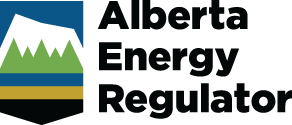Updated June 2023
Figure S1.7 shows the historical and forecast of capital expenditures for Alberta's oil and gas, oil sands, and emerging resources sectors.
Summary
Total capital expenditure was Cdn$26.6 billion in 2022, representing a 44 per cent increase from 2021. After the price recovery from the pandemic in 2021, global energy prices continued to rise significantly in 2022, leading to a more favourable investment environment. Given uncertainties about future economic trends and prices, most of the near-term capital expenditure growth is expected to come from crude oil and natural gas as their investment is more economic, and the return on investment is faster compared with oil sands projects.
Capital expenditure over the 10-year forecast period will remain below 2014 peak levels.
Oil and Gas Capital Expenditures
In 2022
In 2022, the crude oil and natural gas sector (excluding oil sands) spent an estimated Cdn$16 billion in capital expenditures. Expenditures rose by 73 per cent from 2021 because of increased drilling activity.
Number of Wells Placed on Production
Crude oil wells: In 2022, 3466 crude oil wells were placed on production in Alberta, up from 1765 wells in 2021.
Natural gas wells: In 2022, 950 natural gas wells were placed on production, up from 803 wells in 2021.
The well activity forecasts for crude oil and natural gas can be found in Table S4.2and Table S5.3, respectively.
Forecast for 2023 to 2032
Oil and gas capital spending is forecast to increase to Cdn$18.9 billion in 2023 as production responds to higher drilling activity. This represents an 18 per cent increase from 2022 expenditures.
Capital expenditures are expected to increase further to Cdn$19.3 billion in 2024 and Cdn$20.1 in 2025 based on the price forecasts. Oil and gas capital expenditures are projected to increase steadily in 2026 and onwards, reaching Cdn$23.5 billion by 2032.
Oil Sands Capital Expenditures
In 2022
Oil sands capital expenditures are estimated at Cdn$10.0 billion in 2022. This is a 15 per cent increase from Cdn$8.7 billion in 2021. The increase is explained by debottlenecking and efficiency enhancements for oil sands projects.
Sustaining capital expenditures for in situ and mining projects, which is capital spent by oil sands producers to maintain or replace fixed assets, also increased in 2022.
Forecast for 2023 to 2032
Oil sands capital expenditures are forecast to reach Cdn$11.5 billion in 2023. With favourable market conditions, oil sands capital expenditures are projected to increase to Cdn$13.8 billion in 2025.
Spending is projected to be relatively stable beyond 2025, based on the expected timelines of optimization and expansion projects. By the end of the forecast period, oil sands capital spending is projected to reach Cdn$13.9 billion, a relatively low value compared to the 2014 peak level.
Emerging Resources Expenditures
With apparent uncertainty for emerging resources development, capital spending is projected to average Cdn$0.73 billion in 2023, reaching Cdn$0.84 billion by 2032. This spending is projected based on public announcements for hydrogen, helium, lithium, and geothermal projects and their relevant estimated capacity additions.
Learn More
- Methodology
- Data [XLSX]


